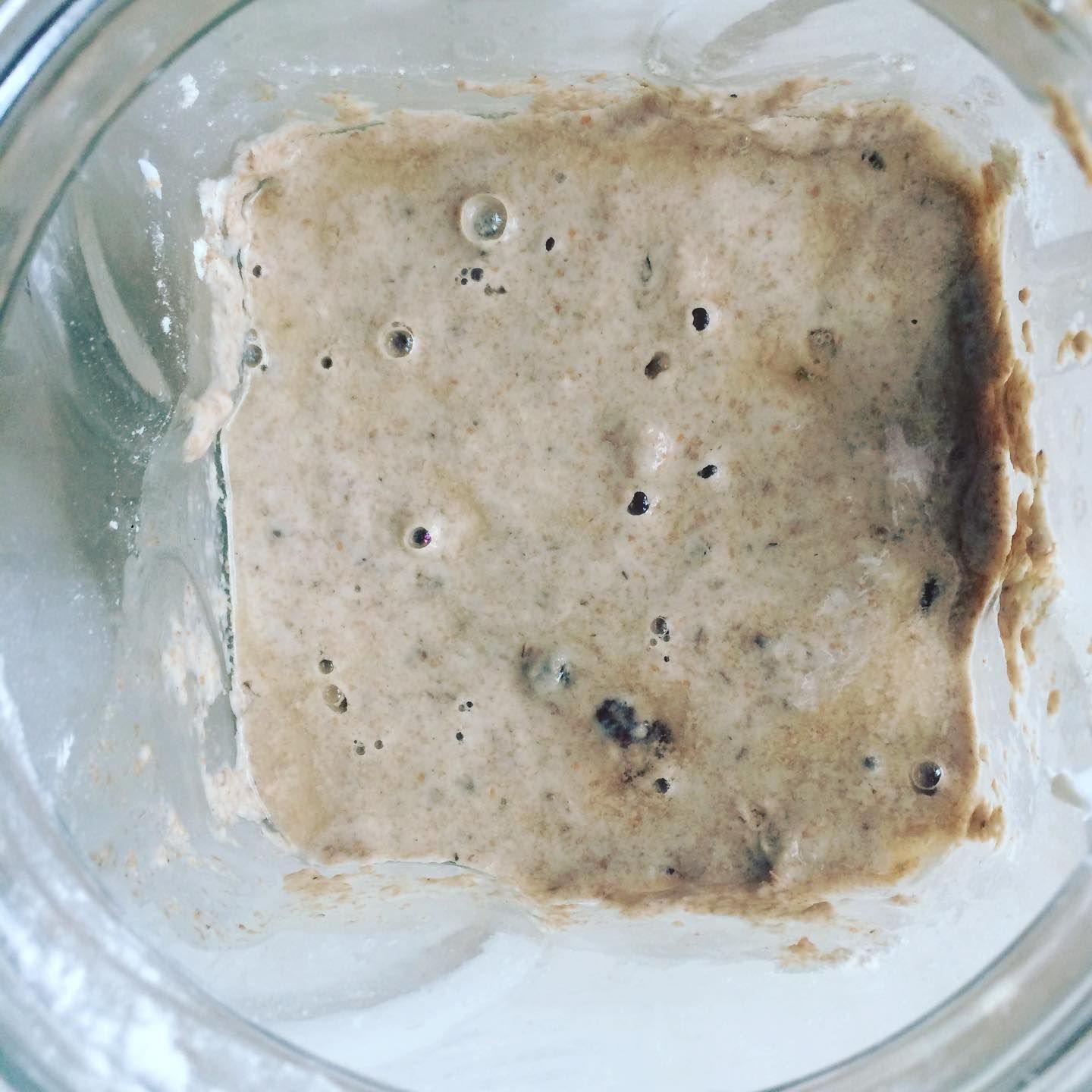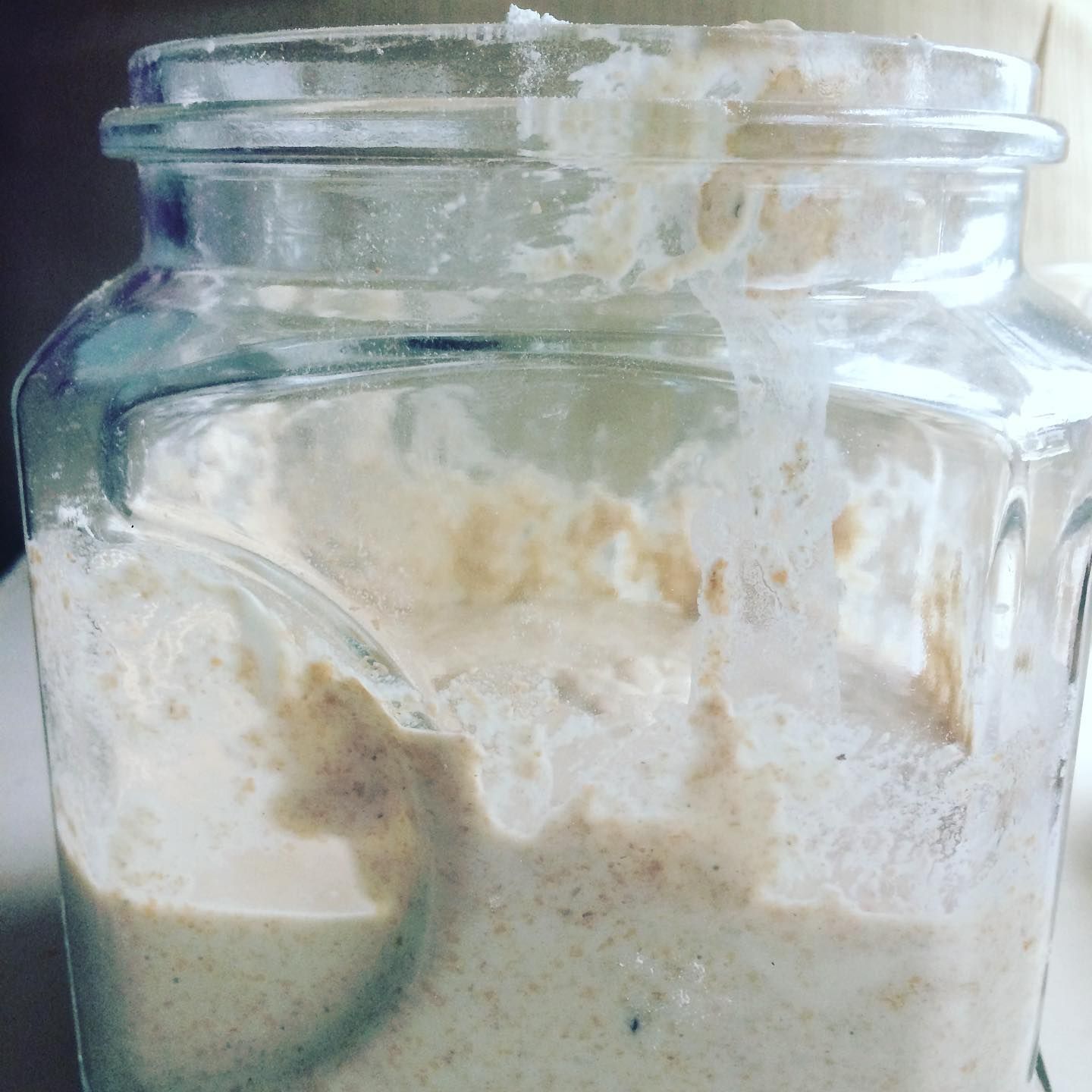Sourdough Bread & Starter
First the starter...

80g wholemeal spelt
20g white spelt
• Use a glass jar to keep your starter in and a wooden implement to stir it. For some reason starters do not like any kind of metal, so keep metal spoons and containers away!!
• If you’re on mains water, then let the water stand for at least an hour so the chlorine can evaporate. Chlorine is antimicrobial so water straight out of the tap is no good for starter.
• Cover your starter but not so it is airtight. It is a living breathing thing and needs air. I read once that people used to leave their starters outside in order to help populate with a wide diversity of microbes.
This morning my starter has bubbles!

This shows that naturally occurring microbes are starting to ferment the mixture - hooray!
Basically they’re having a feast and releasing gas as an effect! A type of microbial wind... for every input there must be a corresponding output... Balance at its finest!
I’ll be feeding it again shortly so stay tuned for the next update...
Day 3
Today I added:
• Another 80g of wholemeal spelt flour and 20g of white spelt flour
• Another 100ml water (plus a splash more again as it seemed a bit thick)
• 1 tablespoon of plain live yoghurt
• 15g currants or raisins

Day 4
This morning the starter is nice and bubbly (first pic below, left).
I then added 50g of white spelt flour and 50g of wholemeal spelt flour and 100mls of water.
My 1.5 litre glass jar is now approaching half full...
Day 7 and 8
Ooooops! I never had time to give the starter any attention yesterday... life happens!
But today it’s looking super bubbly!

So another feed is overdue.
Today and tomorrow I will add 80g of white spelt and 20g of wholemeal spelt...
Not long till it’s usable now and I can get baking again. We’re all really missing a loaf now!!
Day 9 - time to bake!
It is now looking really bubbly and the jar is nearly full so it is time to get baking some bread. Here is my spelt sourdough recipe that I use:
Makes 1 loaf
• 300g white spelt
• 300g brown spelt
(600g of one or the other can be used but I find this works well to create a slightly lighter loaf).
• 1 cup of spelt starter
• 2-3 tsp salt (depending on taste)
• 300ml water (more or less may be needed depending on consistency of starter and whether white/brown flour is used.
1) Mix ingredients together - the mix should be on the dry side, not sticky. Cover bowl with a damp tea towel and leave for 36-42 hours.
2) Oil a bread tin. Remove dough from bowl and briefly knead (a stretch fold can be done - this is literally just as it says - stretch the dough out in one direction and then fold in half and half again. Repeat a stretch going the opposite way, then knead into shape).
3) Shape and place in bread tin. Leave for 6-12 hours. The total time fermenting before baking should be 48 hours, but no more. Here are some loaves ready to go in the oven...
4) Bake at 180 degrees for 45 - 55 minutes depending on your oven. And enjoy!















